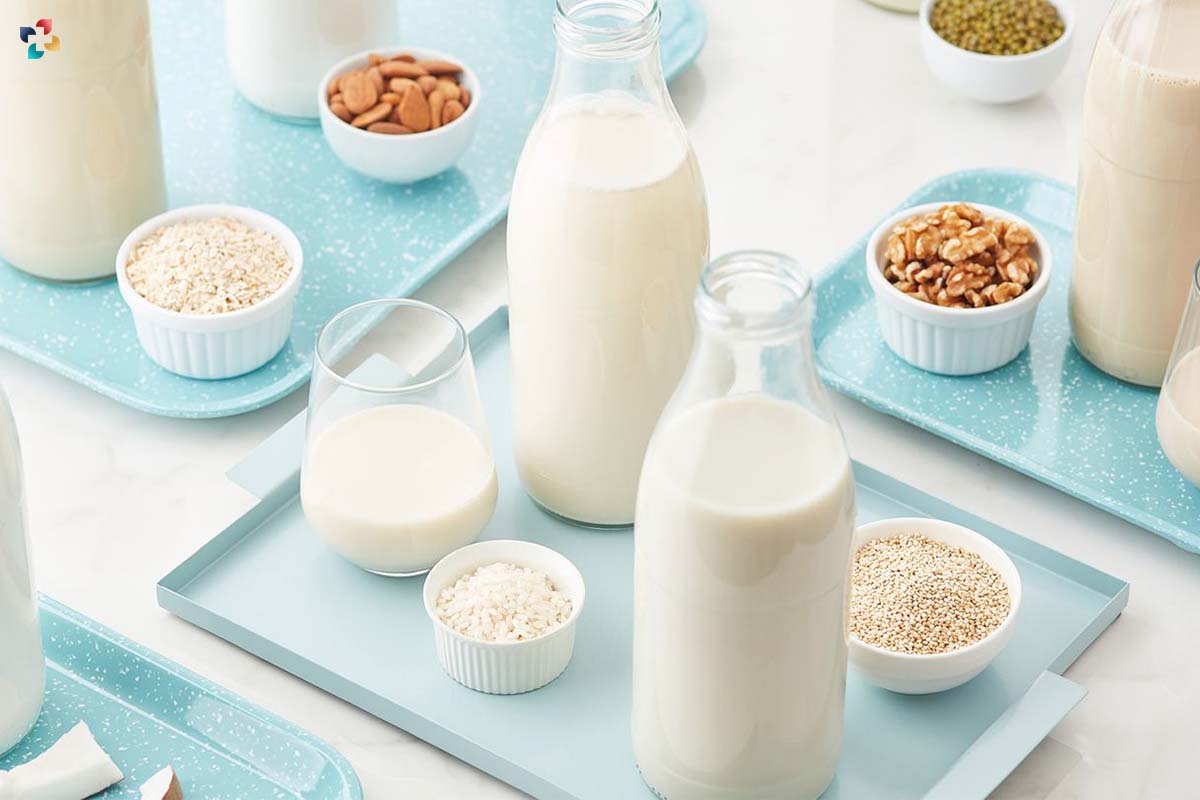Benefits of eating non-dairy food for individuals who are lactose intolerant or have dairy allergies. It involves avoiding foods that contain dairy, such as milk, cheese, and yogurt. However, this can be challenging since dairy is a common ingredient in many foods. In this guide, we will provide you with a comprehensive approach to eating dairy-free food, including the benefits of a dairy-free diet, foods to avoid, and alternatives to dairy.
Here are Benefits of Eating Non-Dairy Food:
1.Reduced Digestive Problems
Many people suffer from lactose intolerance, which causes digestive problems such as bloating, gas, and diarrhea. By avoiding dairy, these symptoms can be reduced or eliminated.
2.Better Skin Health

Dairy products are high in hormones that can cause acne and other skin problems. By eliminating dairy from your diet, you may notice an improvement in your skin.
3.Reduced Inflammation
Dairy products contain pro-inflammatory proteins that can cause inflammation in the body. By avoiding dairy, you may experience a reduction in inflammation and associated health problems.
4.Weight Loss
Dairy products are often high in calories and fat. By removing them from your diet, you may notice weight loss, especially if you replace dairy with healthier alternatives. This are benefits of eating non-dairy food.
FOODS TO AVOID
1.Milk
This includes cow’s milk, goat’s milk, and sheep’s milk. It is a common ingredient in many foods, so always check the label.
2.Cheese
Cheese is made from milk and is therefore not suitable for a dairy-free diet. This includes all types of cheese, such as cheddar, mozzarella, and feta.
3.Yogurt
Yogurt is made from milk and is not suitable for a dairy-free diet. However, there are non-dairy yogurt alternatives available.
4.Cream
Cream is a dairy product and should be avoided on a dairy-free diet. This includes whipping cream, sour cream, and heavy cream.
5.Butter
Butter is made from milk and should be avoided on a dairy-free diet. However, there are non-dairy butter alternatives available.
6.Ice Cream

Ice cream is made from milk and cream and is therefore not suitable for a dairy-free diet. However, there are non-dairy ice cream alternatives available.
ALTERNATIVES TO DAIRY
1.Non-Dairy Milk
There are many non-dairy milk alternatives available, including soy milk, almond milk, coconut milk, and rice milk. These milks can be used in the same way as dairy milk, such as in coffee, tea, and baking.
2.Non-Dairy Cheese
There are many non-dairy cheese alternatives available, including soy cheese, almond cheese, and coconut cheese. These cheeses can be used in the same way as dairy cheese, such as in sandwiches and on pizza.
3.Non-Dairy Yogurt
There are many non-dairy yogurt alternatives available, including soy yogurt, almond yogurt, and coconut yogurt. These yogurts can be used in the same way as dairy yogurt, such as in smoothies and as a snack.
4.Non-Dairy Cream
There are many non-dairy cream alternatives available, including coconut cream, soy cream, and almond cream. These creams can be used in the same way as dairy cream, such as in sauces and desserts.
5.Non-Dairy Butter
There are many non-dairy butter alternatives available, including soy butter, coconut butter, and almond butter. These butters can be used in the same way as dairy butter, such as on toast and in baking.
6.Non-Dairy Ice Cream
There are many non-dairy ice cream alternatives available, including soy ice cream, coconut ice cream, and almond ice cream. These ice creams can be used in the same way as dairy ice cream, such as as a dessert.
TIPS FOR EATING DAIRY-FREE
1.Read Labels
Always read the labels on food products to check for dairy ingredients. Look for terms such as milk, cheese, cream, and butter.
2.Cook at Home
Cooking at home allows you to have complete control over the ingredients in your meals. You can also use non-dairy alternatives in your recipes.
3.Plan Ahead
Planning ahead can help you avoid dairy-containing foods when eating out. Research restaurants and their menus in advance to see what non-dairy options are available.
4.Educate Yourself
Learn about the different non-dairy alternatives available and experiment with them in your cooking and baking.
5.Substitute Wisely

When substituting dairy with non-dairy alternatives, consider the texture and taste of the original dairy product. Some non-dairy alternatives may not work well in certain recipes.
6.Seek Support
Joining a support group or seeking the advice of a nutritionist can help you navigate the challenges and you can have benefits of eating non-dairy food.
BOTTOM LINE
Benefits of eating non-dairy food, including improved digestion, better skin health, reduced inflammation, and weight loss. Avoiding dairy can be challenging, but there are many non-dairy alternatives available. By reading labels, cooking at home, planning ahead, educating yourself, substituting wisely, and seeking support, you can successfully maintain a dairy-free diet.











